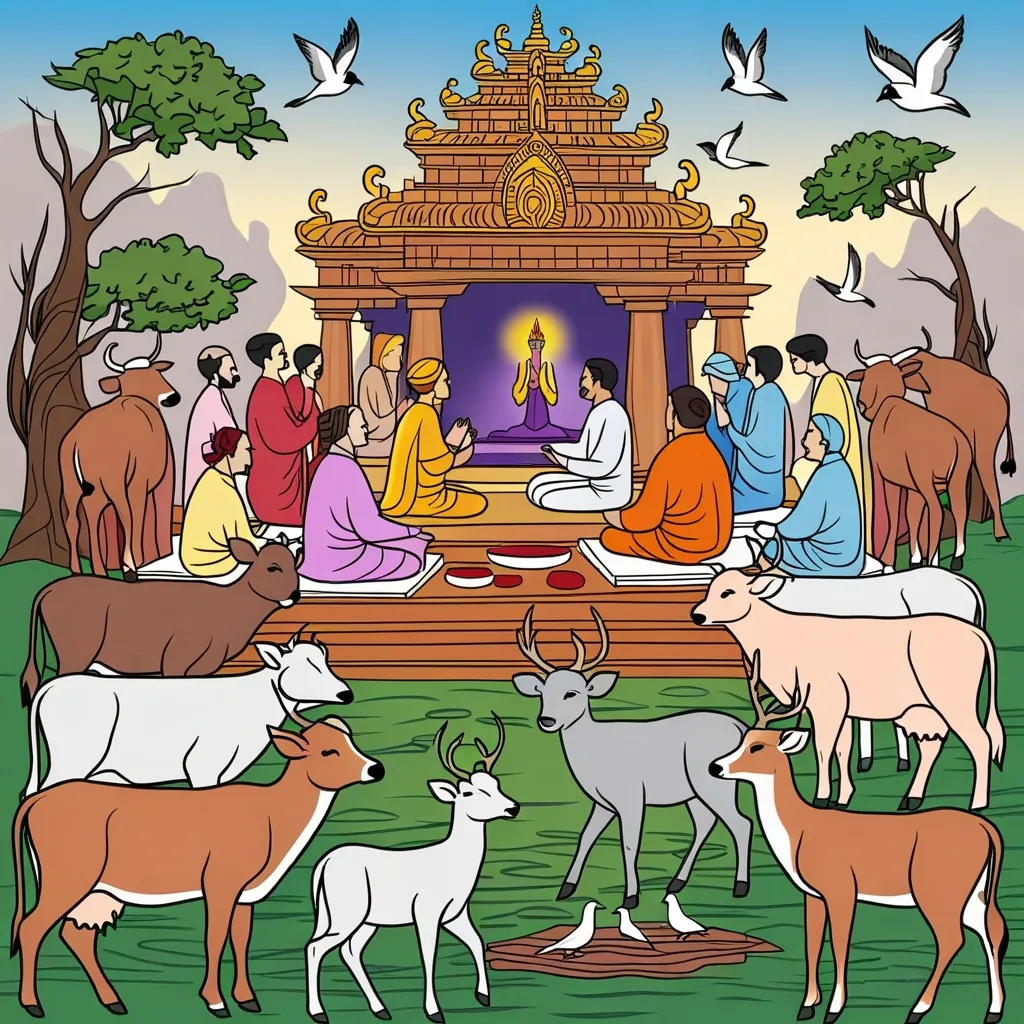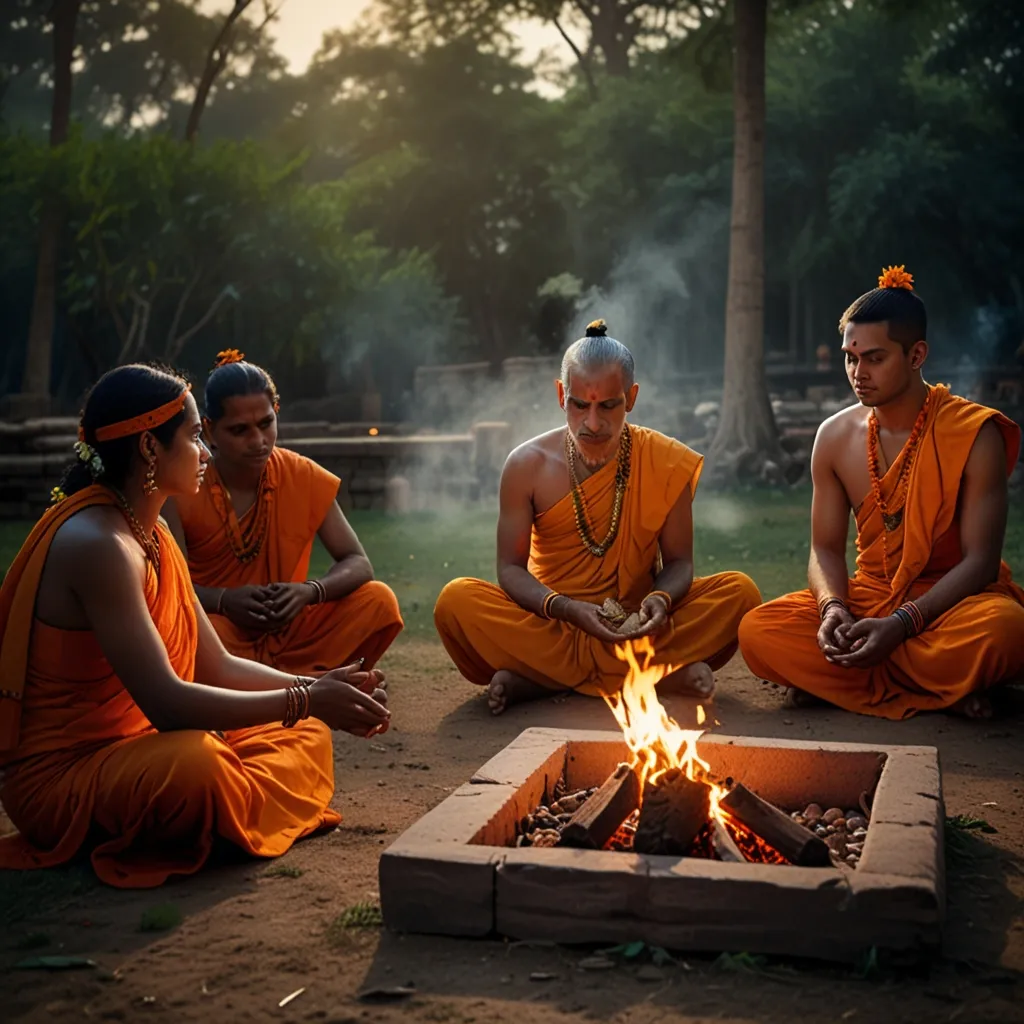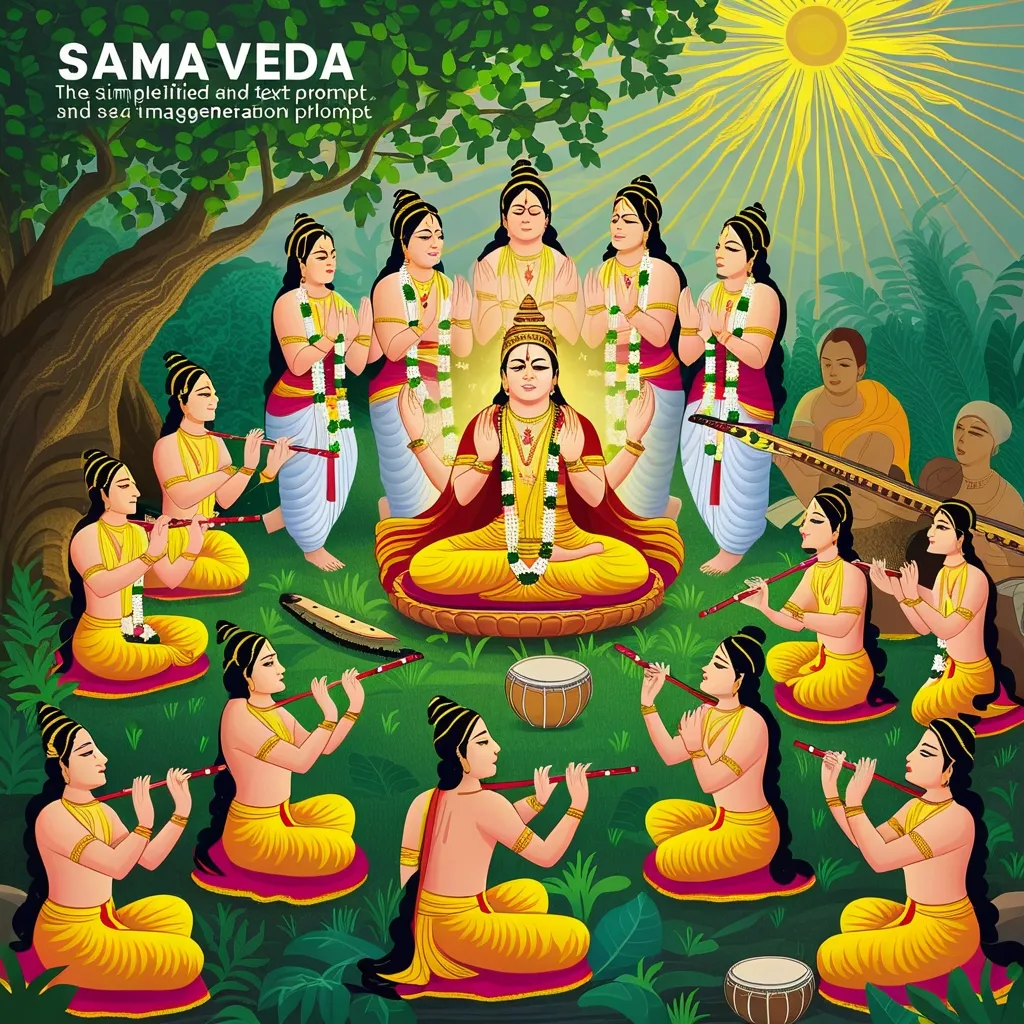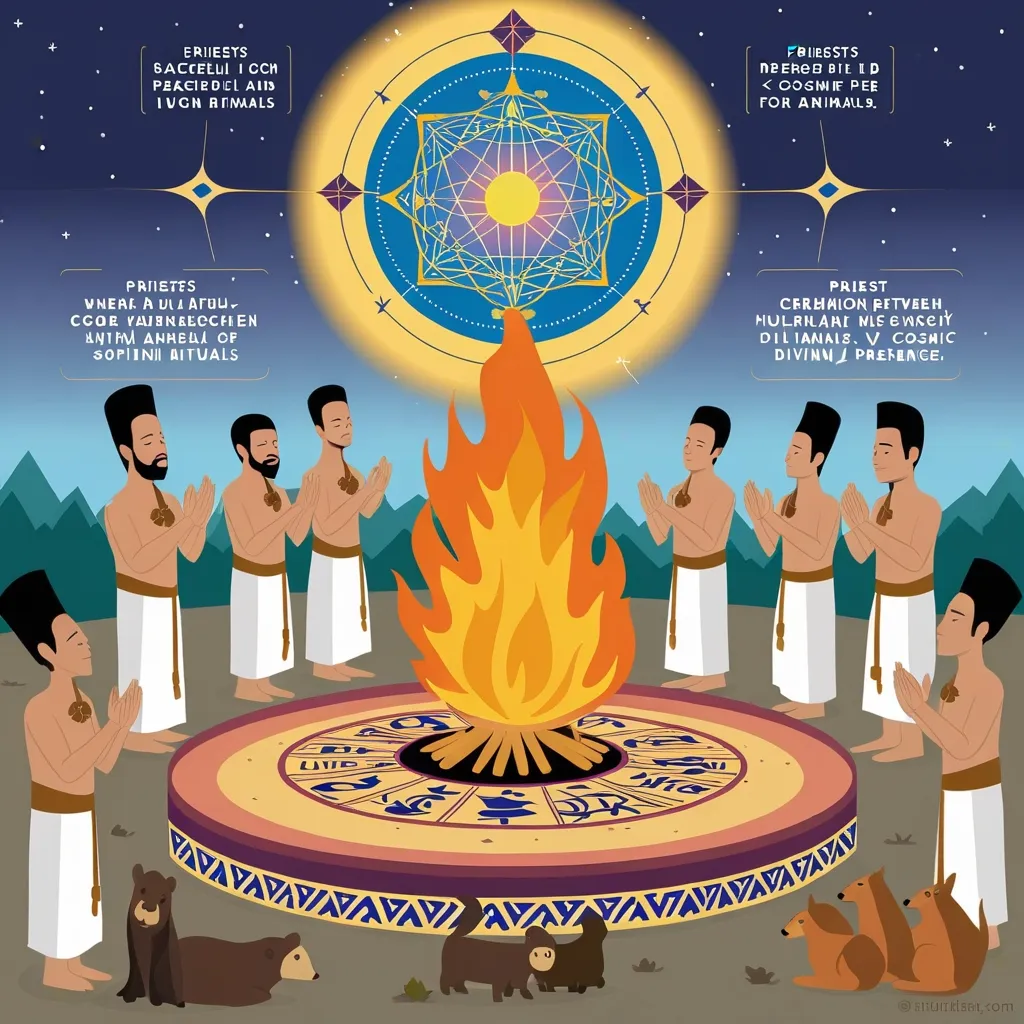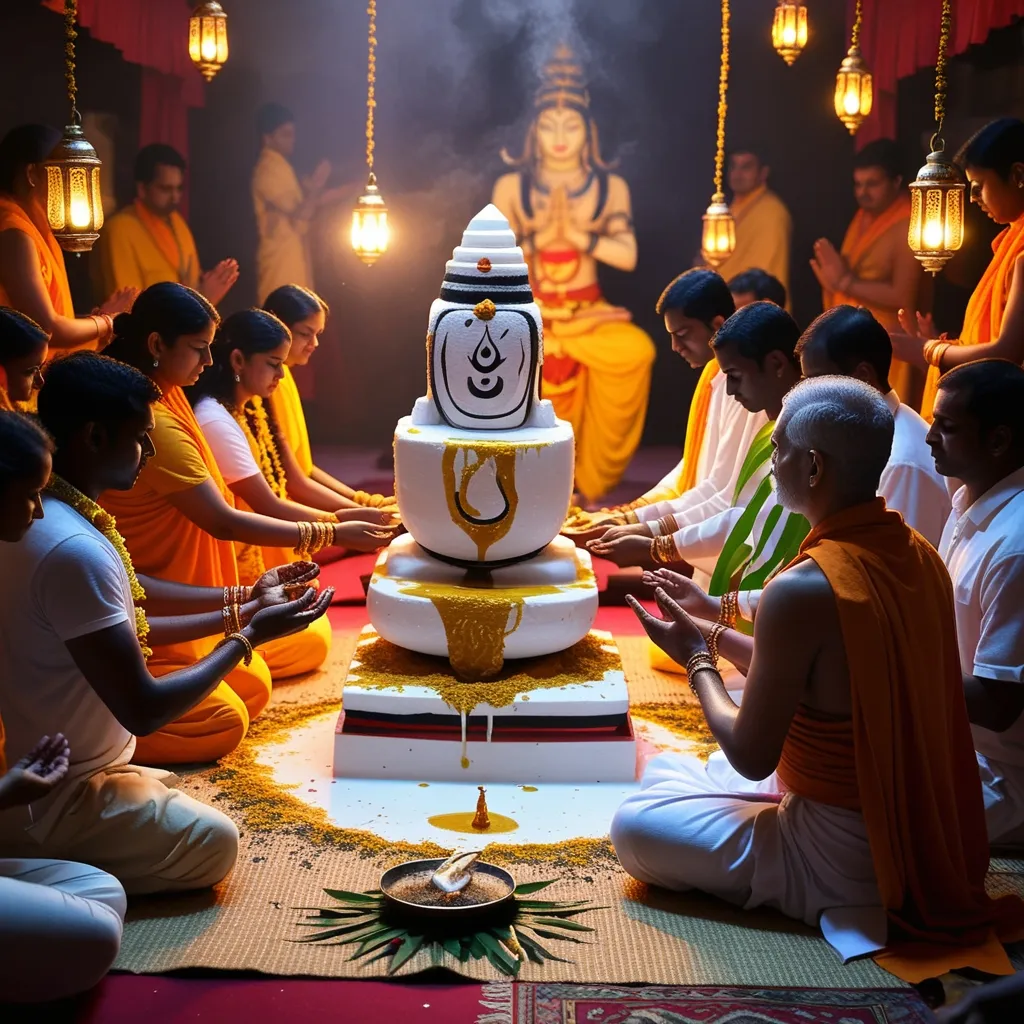So, let’s dive into the fascinating world of ancient Hindu texts, particularly the Yajur Veda, where the concepts of animal sacrifice have often stirred up a storm of misconceptions. You see, a lot of people think these ancient rituals were all about sacrificing animals, but that’s actually a mix-up stemming from various historical and cultural misinterpretations.
Clearing Up the Misconceptions
The Vedas, including the Yajur Veda, don’t actually promote animal sacrifice. This notion mainly popped up because of some misreadings during the middle ages. Back then, certain groups, perhaps for their own gains, twisted these ancient scriptures to justify consuming meat and other practices that didn’t align with the original Vedic spirit. If you look closer, the Vedas stress protecting all life forms, animals included.
What Yajna Really Means
Now, the term “Yajna” is often lost in translation. Many think it just involves sacrificing animals, but that’s far from the truth. Yajna, in its truest essence, is about worship, self-sacrifice, and even fostering community bonds. It’s derived from the word “Diva,” which means a bunch of positive things like happiness, praise, social relations, and so on. It’s not about violence; it’s about spiritual growth and communal harmony.
Protect and Respect Animals
The Yajur Veda couldn’t be clearer about this: all life is sacred. Animals need our protection. There’s this strong directive against killing — whether it’s horses, cows, sheep, goats, or even the gregarious deer. Non-violence and compassion aren’t just hinted at; they’re pretty much the bedrock of Vedic teachings.
Symbolism Over Literalism
Sure, animals popped up in rituals back in the day, but more for their symbolic meaning rather than as literal sacrifices. These rituals were more about promoting social unity and spiritual progress. Sacrificing an animal might symbolize letting go of one’s ego or desires. But people back then also often used plant-based substitutes or other symbols instead.
A Look at Historical Context
During the Vedic era, involving animals in rituals wasn’t about sacrifice as we think of it today. It was wrapped up in the complex fabric of worship and community bonding. Over the years, as society evolved, these practices shifted towards more compassionate forms of worship.
Modern-Day Take
Jump to today, and most Hindu scholars and sects agree: animal sacrifice just doesn’t jive with the true essence of the Vedas. The teachings are all about Ahimsa, or non-violence, and protecting life. In places where animal sacrifice still occurs, it’s seen as deeply symbolic and not something that’s frequently done or encouraged.
Ahimsa: The Heart of It All
Ahimsa is a cornerstone of Hinduism, extending kindness to all living beings. The Vedas teach that harming any creature is essentially harming yourself. True spiritual growth blossoms from compassion and kindness. Many Hindus live this out through vegetarianism and other practices that reflect the well-being of all life forms.
Community and Evolving Rituals
Vedic rituals were, and still are, about bringing people together, fostering unity and shared values. When animals were part of the rituals, it wasn’t to promote violence but to symbolize unity. Nowadays, these rituals have morphed into more inclusive, compassionate practices that stay true to the non-violent message of the Vedas.
Wrapping It Up
Understanding the symbolic meaning of sacrificial animals in ancient Vedic rituals gives us a richer, nuanced perspective. While history shows some involvement of animals, it’s clear these weren’t acts of endorsement for violence. They were symbolic gestures aimed at spiritual and communal harmony. The Vedas’ core essence lies in compassion, non-violence, and the sanctity of all life — values that continue to ripple through Hindu practices to this day.
And there it is — a blend of ancient wisdom and modern understanding wrapped up in a cozy, casual narrative. The takeaways? Protect life, practice compassion, and let spirituality bind communities together. Simple, right?
